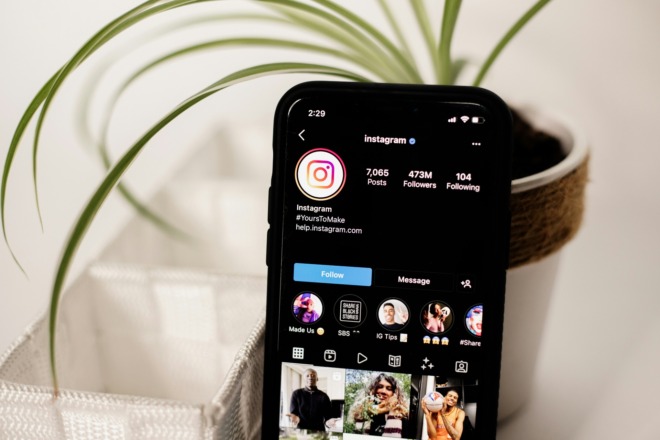Art is an extension of humanity itself, the product of creativity, passion, and self-expression. It enriches our lives such that we can’t go without it. However, artists also can’t go without groceries and a place to live. Here are some tips for saving money as an artist, including finding cheaper supplies, forgoing using an easel for painting, and using a tube wringer to squeeze every last drop from a paint tube — and use every penny’s worth of color.
Stretching Your Own Canvas Stretches Your Budget
Canvases are an essential tool in any painter’s arsenal. They’re also notoriously expensive. Artists can save money by learning to stretch their own canvases, a process that requires a little elbow grease but will pay off in the long run.
The cost of a staple gun, stretcher bars, pliers, a utility knife, and primer will probably be lower than the total price of buying several pre-made canvases, especially for someone who paints a lot. Plus, most people already have some of the necessary tools — like a hammer and spray bottle — lying around the house somewhere.
Coupons Can Make the Unaffordable Affordable
Before shopping for supplies, artists should see if any coupons are available. Many stores offer coupons on their websites or through apps. Stores also sometimes send out coupons to previous customers or people subscribed to their mailing list. When visiting brick-and-mortar stores, it’s a good idea to ask employees if there are any ongoing sales or discounted items available.
You Don’t Need an Easel for Painting
A high-end easel for painting can easily run an artist several thousand dollars. Even the cheapest models start around $50, making them inaccessible to many people.
Thankfully, using an easel for painting isn’t strictly necessary. Alternatives include leaning the canvas on a stack of books on a table, paint box lid, or step ladder. Some artists also like to paint with their canvas directly on the table, using an overhead light to improve visibility. And, of course, there are many other creative ways to paint without an easel, including painting murals and pottery.
Basic Colors Can Become Anything
How often will that specialized shade of seafoam green be useful? Purchasing a broad spectrum of paints in every color available saves time when trying to finish a piece quickly, but in doing so, people end up spending more money.
Artists can cut costs by getting back to basics — tubes or tubs of black, white, red, yellow, and blue pigments can create any hue imaginable. It’s simply a matter of perfecting the art of color mixing. With a little practice and a big palette, artists can learn to mix just the right shade of purple to paint a plum or the tiny, detailed veins in a person’s eye.
Every Drop Counts
Paint may be dispensable in the literal sense, but it’s very much indispensable when it comes to how expensive it is. Artists should dole out small amounts of paint at a time and add more to the palette as needed. Once the paint is out of the tube, it’s pretty hard to put it back in!
Oil paints are particularly pricey, so artists should make an effort to use them up completely. A tube wringer is a specialized tool that, as the name implies, uses a roller and crank to force that last bit of paint out of the bottom of a tube. Artists can buy this essential gadget for less than $20. And, of course, it’s also handy for getting all of the toothpaste out of a tube.
Good Habits Go a Long Way
It happens to even the most responsible artists — after a late-night, bleary-eyed painting session, a brush gets left out by mistake. In the morning, the bristles are a hard, mummified clump of their former selves, and no amount of soaking them in turpentine is enough to restore their soft luster.
It’s frustrating enough to ruin a cheap synthetic brush by forgetting to clean it. But desperately trying to rinse out a kolinsky sable brush — the bristles of which are made from weasel hair three times more valuable than gold — is literally pouring money down the drain.
Artists can cut down on supply costs by making it a habit to always clean their brushes, palettes, and tables after painting. It’s also important to put the caps back on all paint tubes and seal them in bags if necessary.
Buying in Bulk Can Save Big
Although it’s only worth it if an artist truly plans to use all of the supplies, buying in bulk can save a lot of money. Unit costs often go down when ordering supplies in larger quantities.
For example, sites that sell mugs for printing or painting usually offer discounts for buying 100 mugs at a time compared to smaller orders. This allows artists to potentially save hundreds of dollars in the long run if they tend to buy a lot of mugs.
You Can Photograph and Frame Your Own Artwork
Many companies offer professional artwork photography services for people looking to sell or display their work. However, artists can save a lot of money by learning to photograph their art themselves.
To take the best pictures, it’s ideal to use a tripod-mounted camera in the early morning, indoors, on a cloudy day. It’s important to align the camera with the artwork to avoid glare. Many artists process their photos on photo editing software with the painting nearby for reference, helping them get an exact color match.
Similar to photography companies, there are businesses that professionally frame people’s art, cutting it down to the proper size and mounting it for display. Artists can save big by avoiding these services altogether and doing the framing themselves. They can choose canvases that they know will fit in a compatible frame before starting the painting or drawing process.
Some Media Are Cheaper Than Others
When it comes to production costs, not all art is created equal. Oil paints and canvases are relatively expensive. Acrylic paints are cheaper. Pencils and paper tend to be cheaper still, and digital art — once an artist pays the initial upfront cost of a tablet, stylus, and graphic design software — can be very cost-effective in the long run.
Of course, artists who choose to sell their work can price it accordingly. However, people whose art is more of a hobby can save money by choosing an affordable medium.
Switching media can be frustrating, but it’s also a great way to learn new skills. People who have always worked in oil might surprise themselves when they start branching out to watercolor and find the lack of control freeing. Artists who have always done metal carving could enjoy expressing themselves with wood carving, instead.
Art Is for Everyone
Buying expensive supplies like an easel for painting and high-end oil paints isn’t a requirement to become an artist. There are so many ways to make art, and everyone should be able to enjoy the process of self-expression without worrying about breaking the bank.
Artists can practice on a budget by looking for affordable supplies, always washing their brushes, and learning a few DIY skills like stretching canvases and mixing colors. In the end, art is all about having fun, which means anyone can do it.


